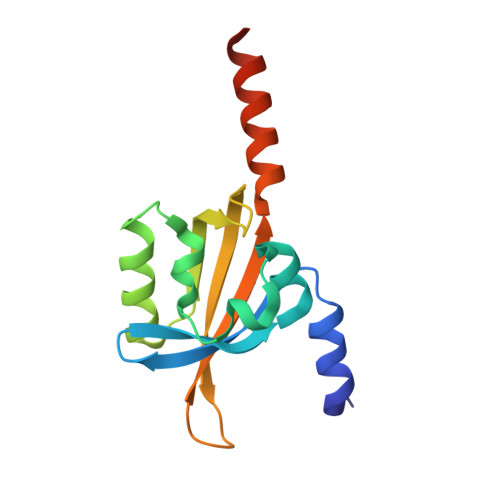Fixing Flavins: Hijacking a Flavin Transferase for Equipping Flavoproteins with a Covalent Flavin Cofactor.
Tong, Y., Kaya, S.G., Russo, S., Rozeboom, H.J., Wijma, H.J., Fraaije, M.W.(2023) J Am Chem Soc 145: 27140-27148
- PubMed: 38048072
- DOI: https://doi.org/10.1021/jacs.3c12009
- Primary Citation of Related Structures:
8Q5E, 8Q5F, 8Q5G - PubMed Abstract:
Most flavin-dependent enzymes contain a dissociable flavin cofactor. We present a new approach for installing in vivo a covalent bond between a flavin cofactor and its host protein. By using a flavin transferase and carving a flavinylation motif in target proteins, we demonstrate that "dissociable" flavoproteins can be turned into covalent flavoproteins. Specifically, four different flavin mononucleotide-containing proteins were engineered to undergo covalent flavinylation: a light-oxygen-voltage domain protein, a mini singlet oxygen generator, a nitroreductase, and an old yellow enzyme-type ene reductase. Optimizing the flavinylation motif and expression conditions led to the covalent flavinylation of all four flavoproteins. The engineered covalent flavoproteins retained function and often exhibited improved performance, such as higher thermostability or catalytic performance. The crystal structures of the designed covalent flavoproteins confirmed the designed threonyl-phosphate linkage. The targeted flavoproteins differ in fold and function, indicating that this method of introducing a covalent flavin-protein bond is a powerful new method to create flavoproteins that cannot lose their cofactor, boosting their performance.
- Molecular Enzymology Group, University of Groningen, Nijenborgh 4, 9747 AG Groningen, The Netherlands.
Organizational Affiliation:


















